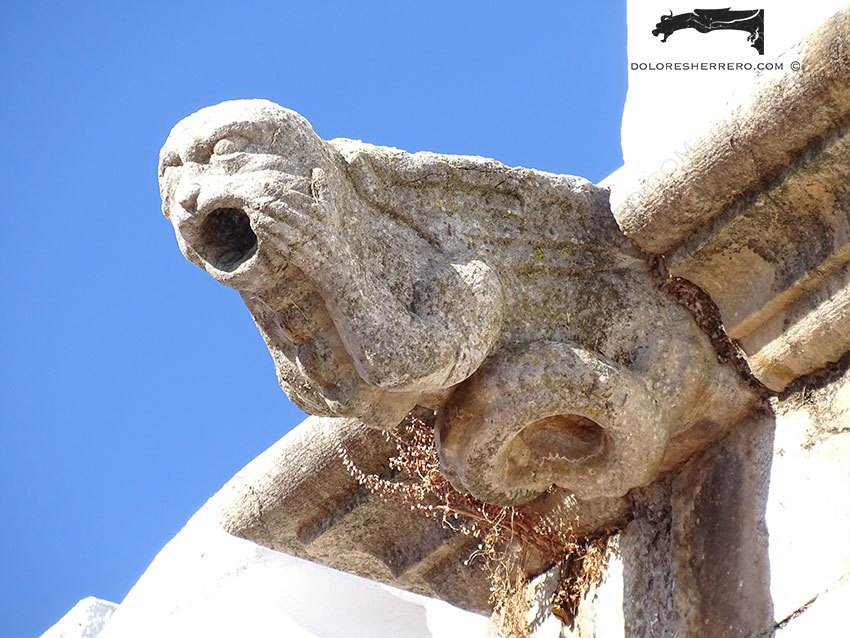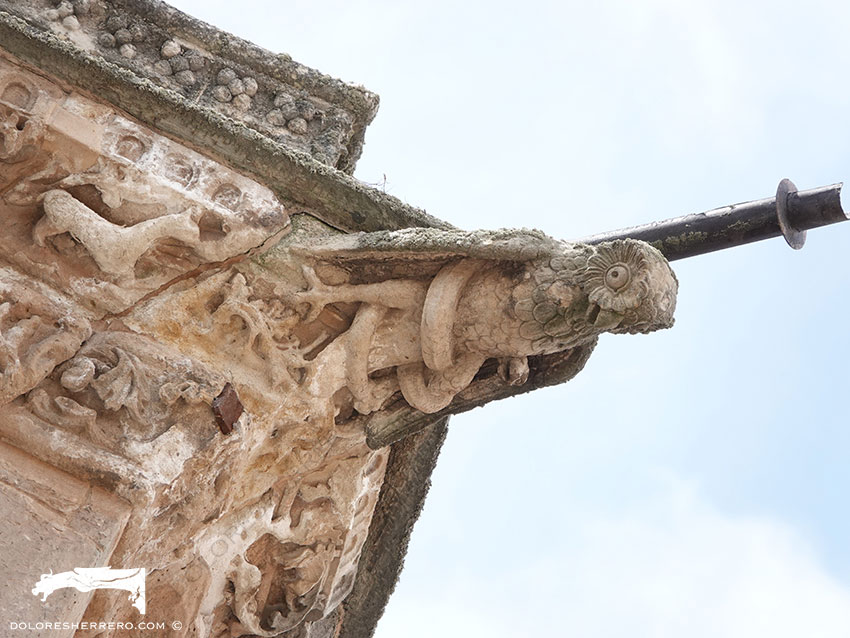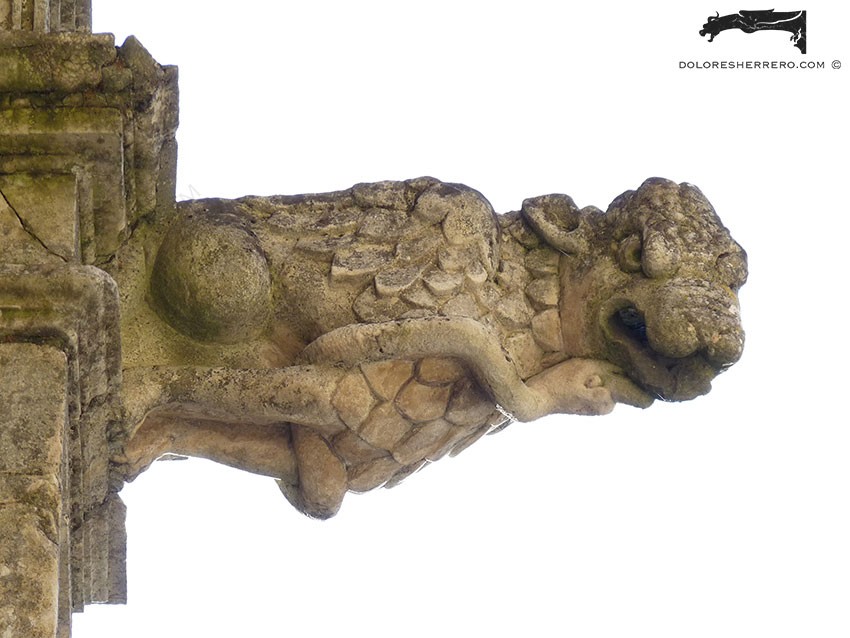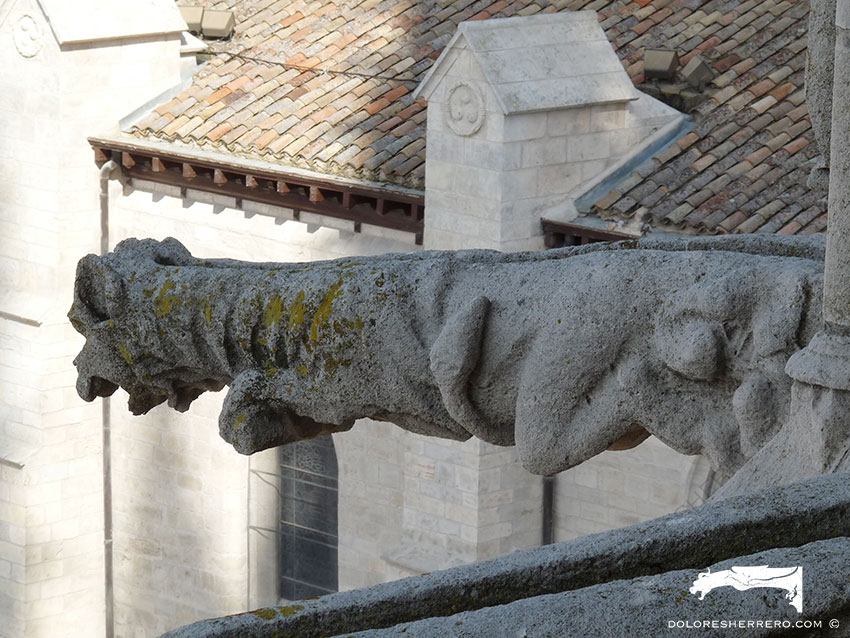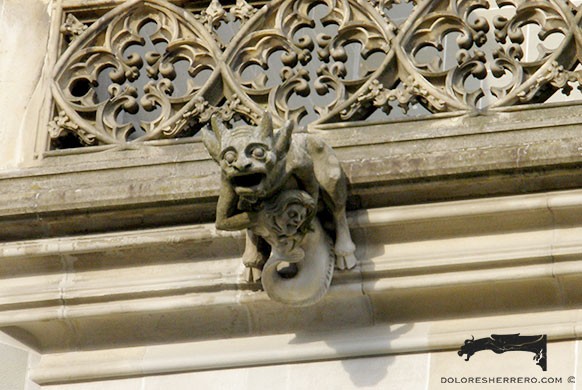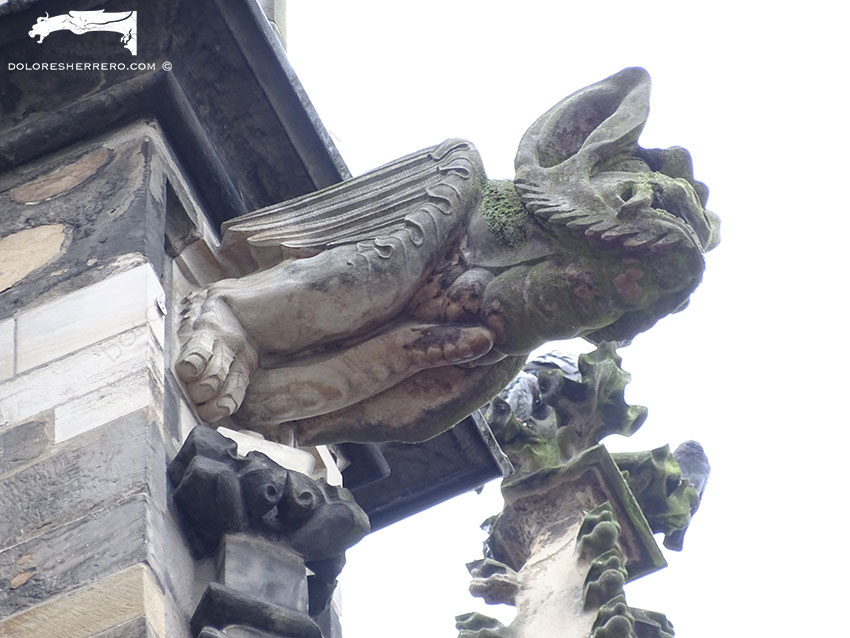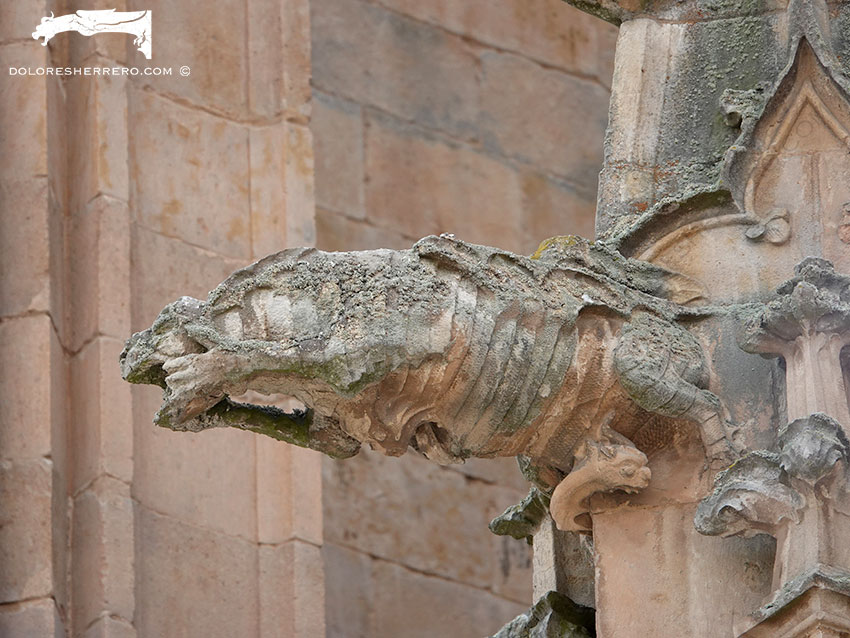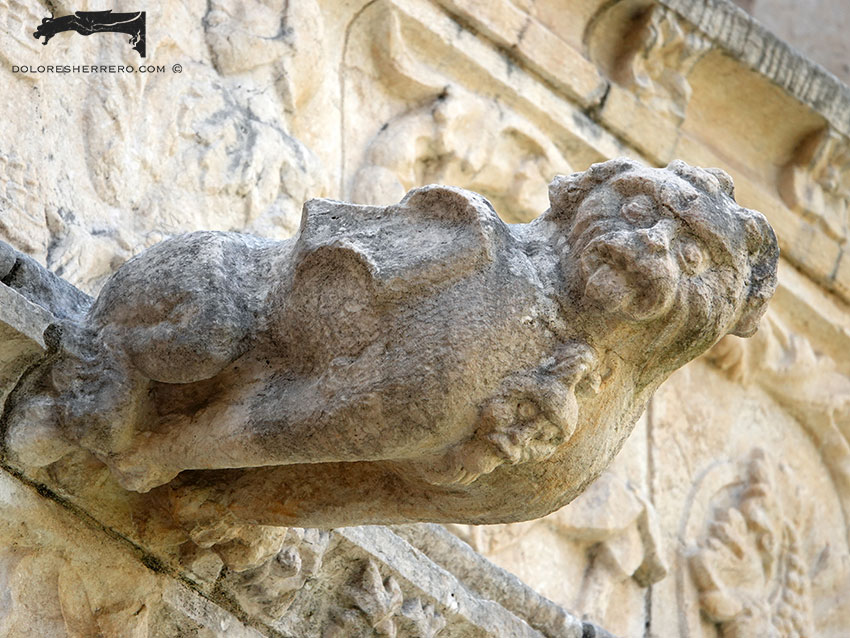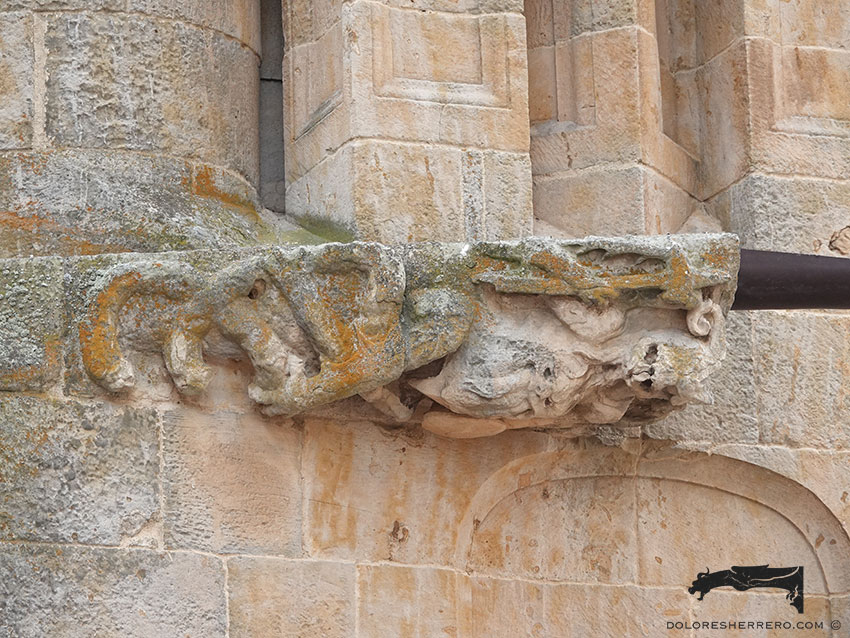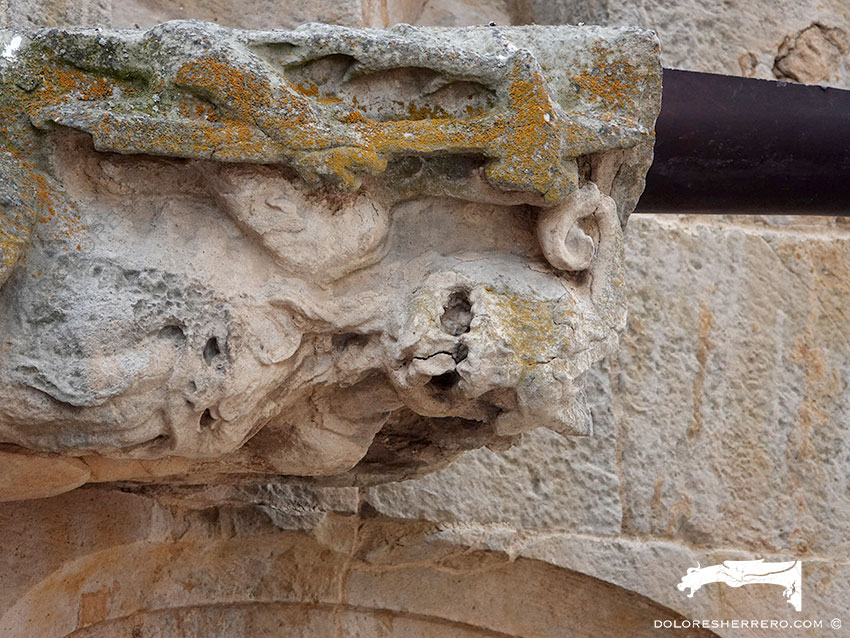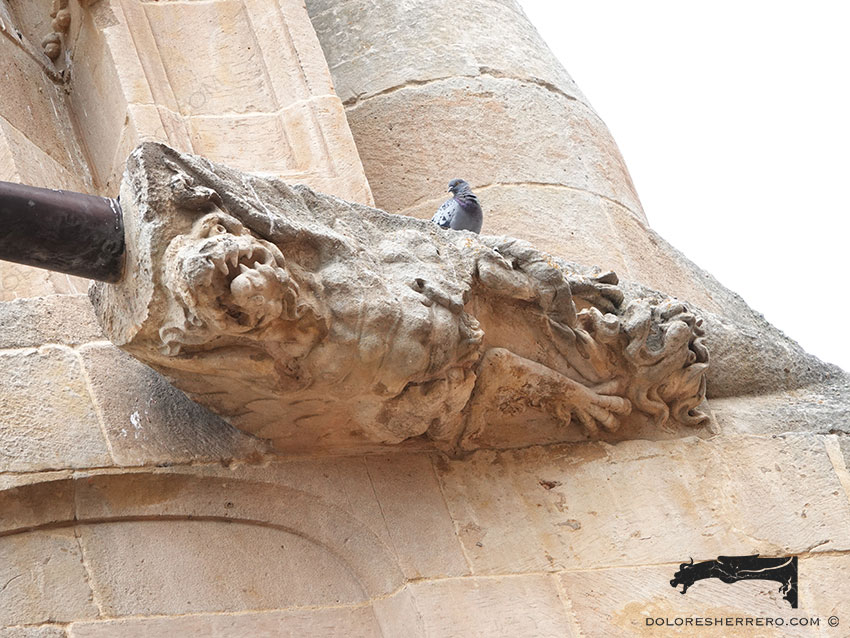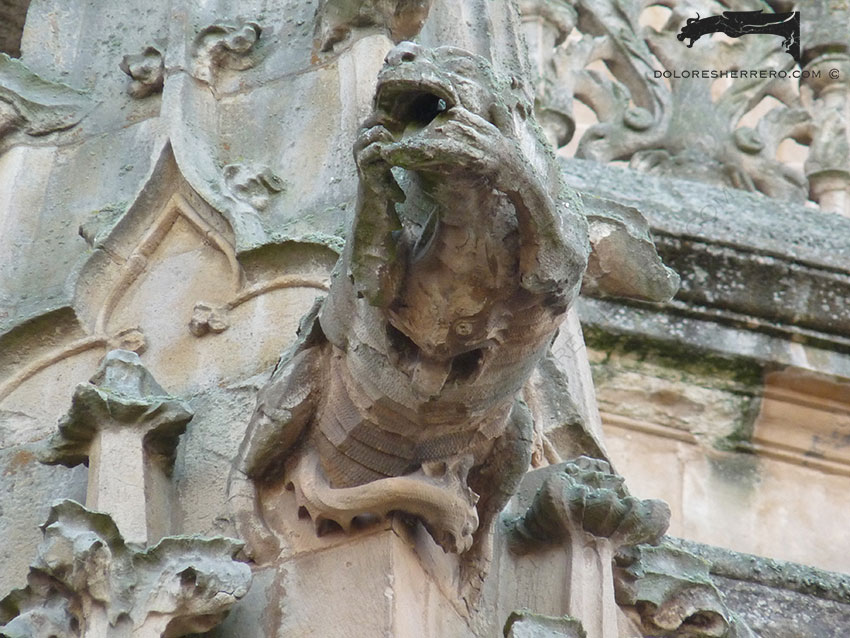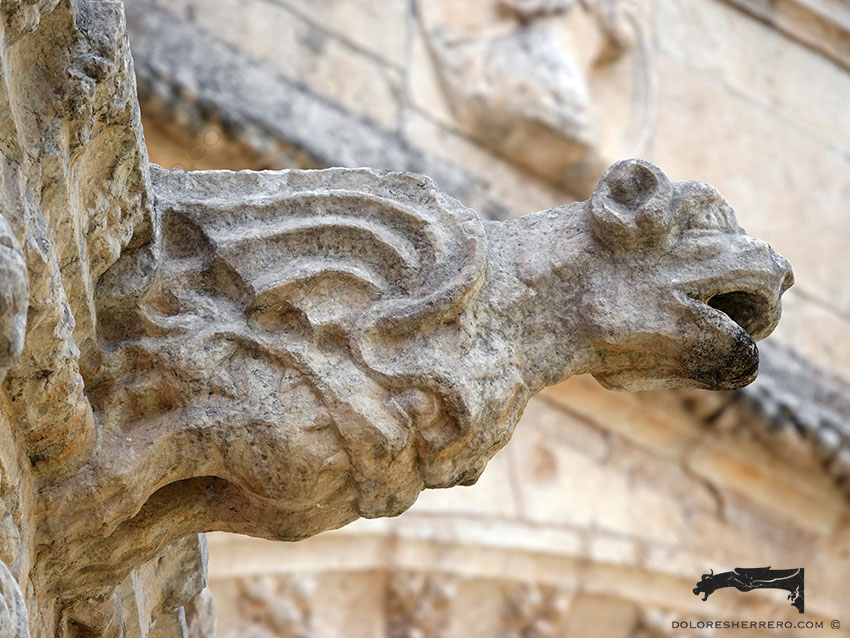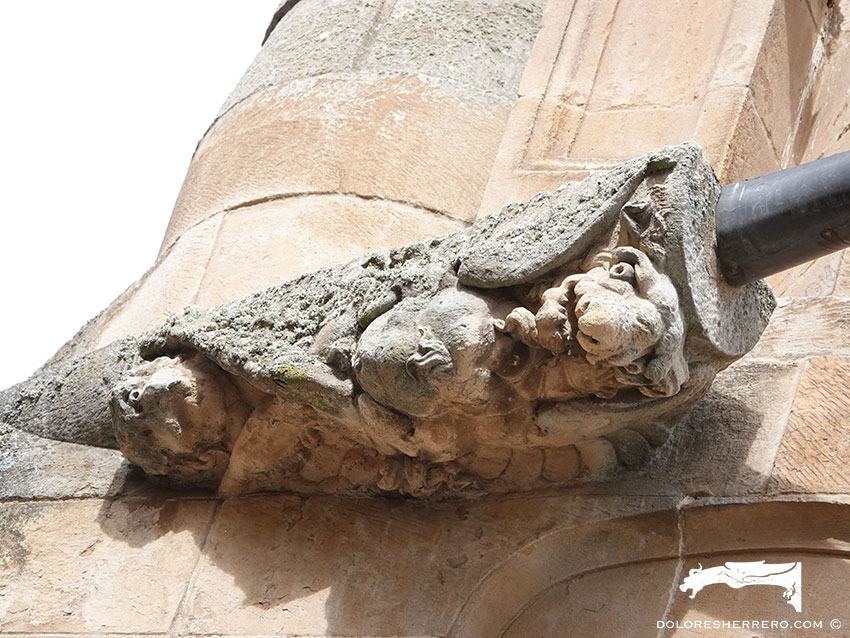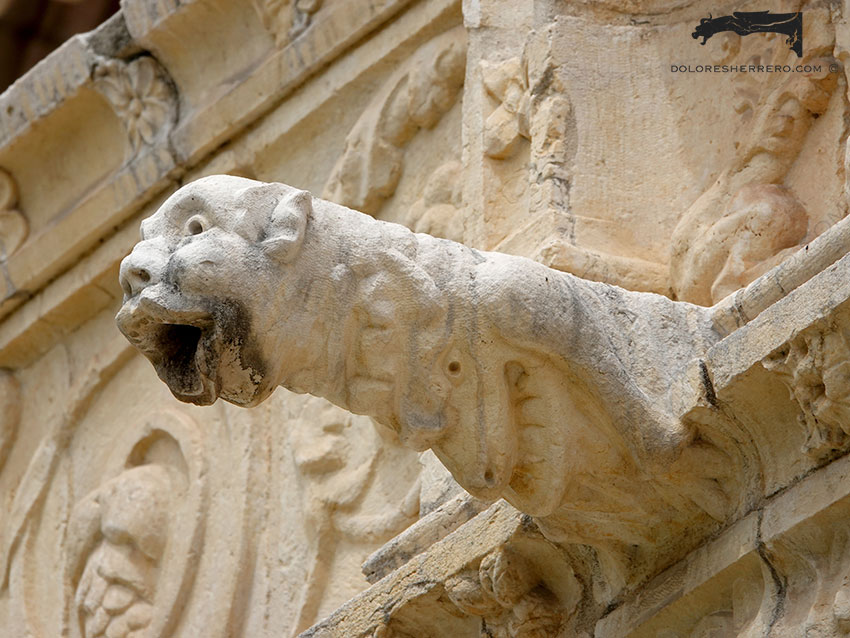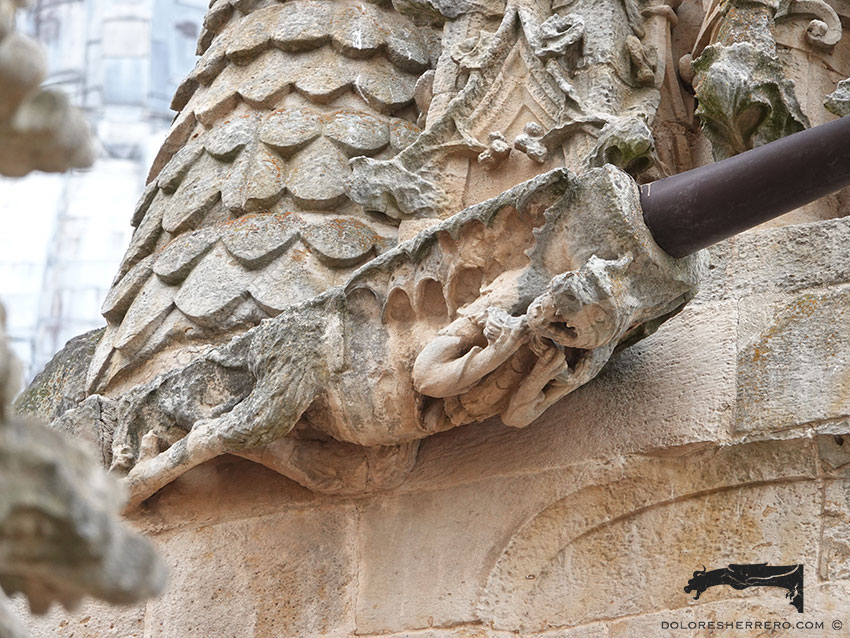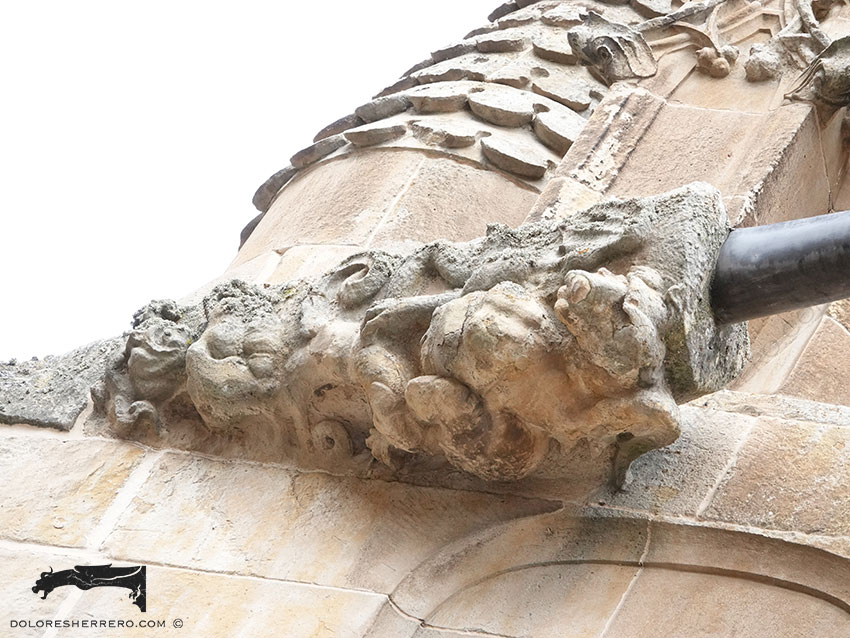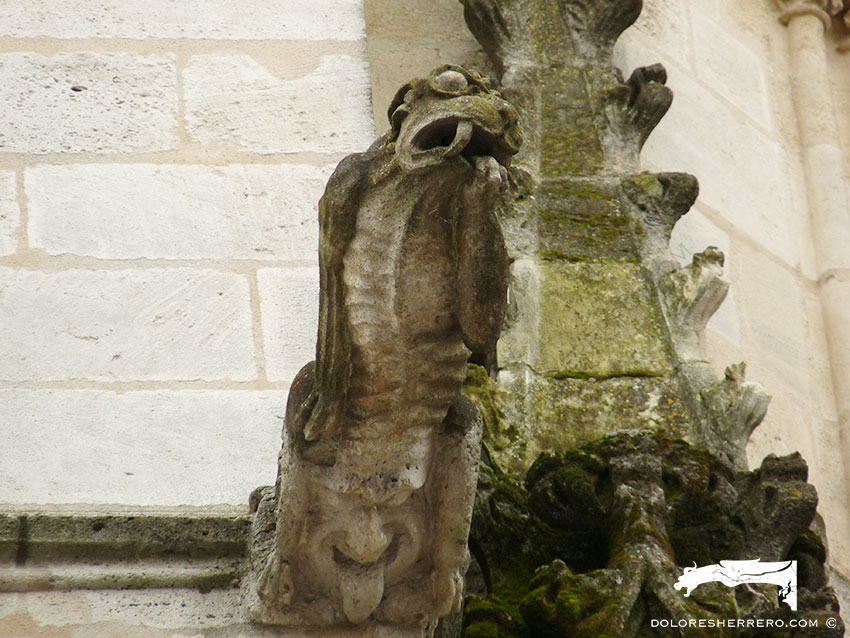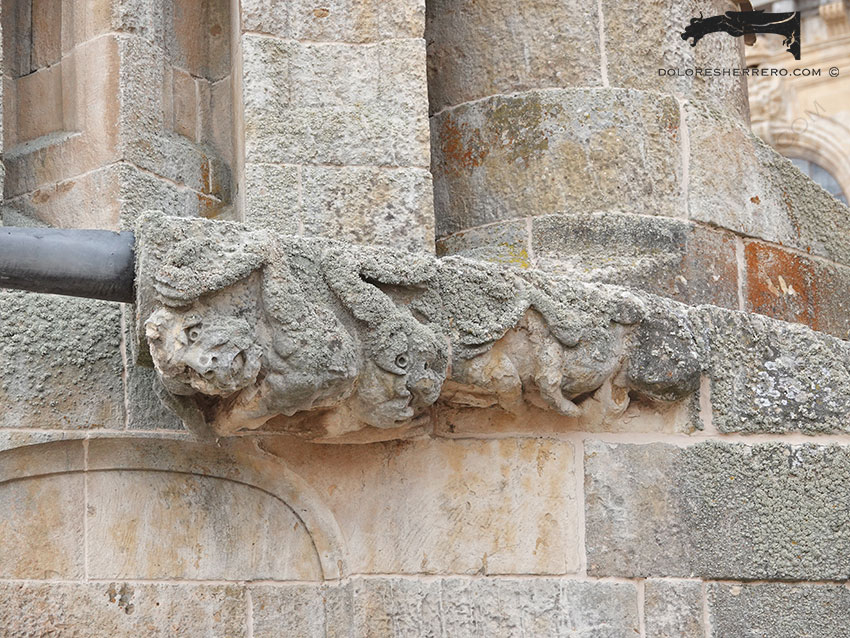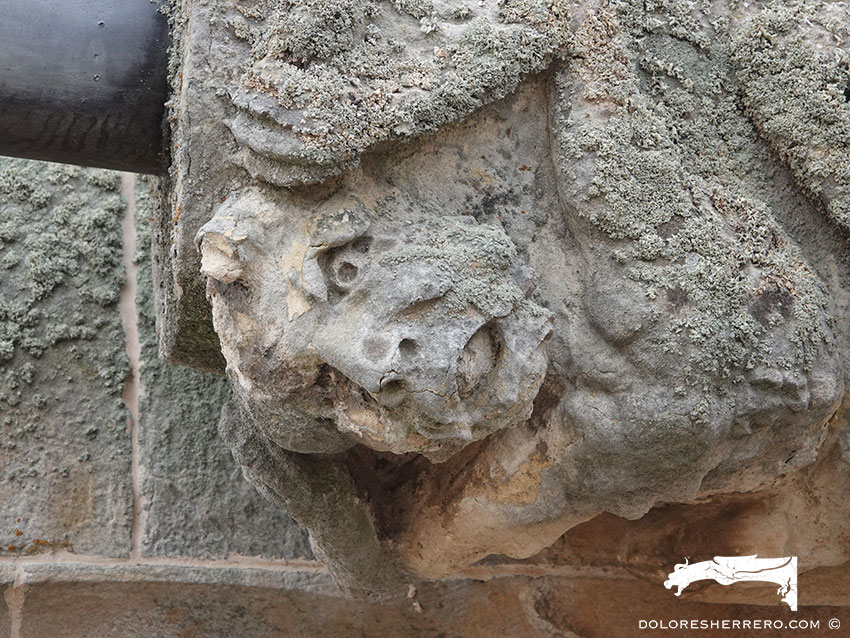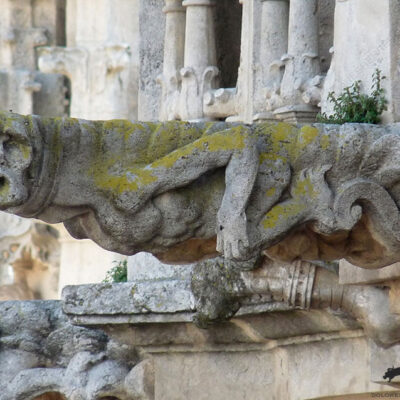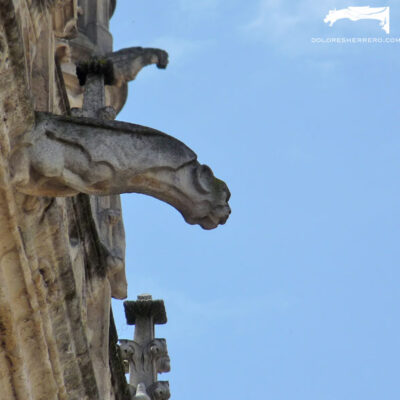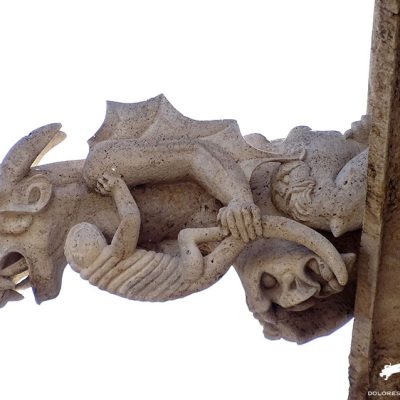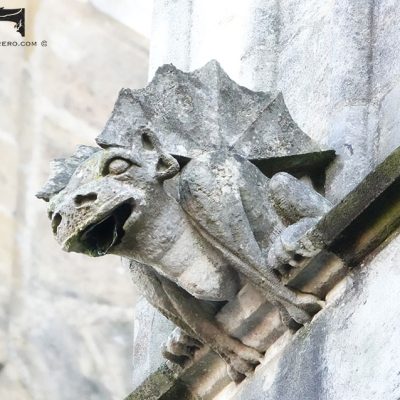This post continues with the portrayal of the devil in gargoyles, one of their predominant themes. In this third part, we explore figures with serpents—an animal closely linked to demonic iconography—and we also examine other striking demons commonly found in the medieval imagination: gastrocéphalic demons.
The Serpent and Its Demonic Association in Gargoyles
In Christian iconography, the snake is linked with the idea of evil and the devil. “Every creature that moves along the ground is to be regarded as unclean” (Lev. 11, 41-42). In the book of Genesis it’s a symbol of carnal desire and the devil.
The snake appears many times in gargoyles: trapping, biting, on the end of tails or feet, etc. According to Rebold Benton, figures with snakes winding around them could be a reference to the snake coiled round the tree in the Garden of Eden.
The Serpent as a Phallic Symbol in Demonic Representations
Sometimes devils are seen with phallic snakes instead of penises. The depiction of the phallus is a trait linked to the devil and to some images of satyrs in which they are shown exposing it. This could also signify greater power and may date back to Bes, a god in ancient times, as pro-phallic portrayals have been around since the 4th century BC.
- Church of Santa María Magdalena in Olivenza (Badajoz, Spain)
- New Cathedral of Salamanca (Spain)
- León Cathedral (Spain)
- León Cathedral (Spain)
- Burgos Cathedral (Spain)
- Bern Cathedral (Switzerland). Photo: Manuel Custodio
- Aachen Cathedral (Germany)
- New Cathedral of Salamanca (Spain)
Gastrocéphalic Demons in Gargoyles
Many gargoyles feature gastrocephalic devils. The head in the belly can convey the idea that the centre of the brain has descended to the lower parts of the body. Émile Mâle refers to the displacement of intelligence to serve the basest of instincts.
Multiple Faces in Demonic Figures
You can also find devils with two or more faces or heads on other parts of the body (chest, back, feet). This unsettling multiplicity of faces often resembles masks surrounding the body, usually grotesque and mocking in appearance, giving the gargoyle an imaginary quality and therefore an unreal presence.
- Jerónimos Monastery in Lisbon (Portugal)
- Palencia Cathedral (Spain)
- New Cathedral of Salamanca (Spain)
- New Cathedral of Salamanca (Spain)
- New Cathedral of Salamanca (Spain)
- New Cathedral of Salamanca (Spain)
- New Cathedral of Salamanca (Spain)
- Jerónimos Monastery in Lisbon (Portugal)
- New Cathedral of Salamanca (Spain)
- New Cathedral of Salamanca (Spain)
- Jerónimos Monastery in Lisbon (Portugal)
- New Cathedral of Salamanca (Spain))
- New Cathedral of Salamanca (Spain)
- Bordeaux Cathedral (France)
- New Cathedral of Salamanca (Spain)
- New Cathedral of Salamanca (Spain)
Imagination and Symbolism in Demonic Iconography
The serpent, the multiple faces, and the gastrocéphalic figure are all ways of representing evil that gargoyle sculptors expressed with remarkable creativity and imagination. These are magnificent gargoyles—some truly unsettling—marked by extraordinary plasticity and expressiveness; works well worth contemplating.
Bibliography
BURBANK BRIDAHAM, L., The Gargoyle Book. 572 examples from Gothic Architecture, New York, Dover Publications, Inc., 2006.
CASTELLI, E., De lo demoníaco en el arte. Su significación filosófica, Santiago de Chile, Ediciones de la Universidad de Chile, 1963.
GRIVOT, D., Le diable dans la cathedrale, Paris, Editions Morel, 1960.
LINK, L., El Diablo. Una máscara sin rostro, Madrid, Editorial Síntesis, S. A., 2002.
REBOLD BENTON, J., Holy Terrors. Gargoyles on medieval buildings, New York, Abbeville Press, 1997.

Doctor of Art History and researcher specializing in the study of gargoyles.
I am Dolores Herrero Ferrio, and my thesis, “An Approach to the Study of Gargoyles of Gothic Cathedrals in Castilla and León”, is dedicated to the study of these fascinating figures.
If you like gargoyles and art history, you will also enjoy my book, “The Gargoyle and Its Iconography,” a book I have written with great care for those interested in the world of gargoyles.
I have created my own Encyclopedia of Gargoyles, a Gargopedia to share with you, where you will discover all the secrets and wonders of these enigmatic sculptures.
I hope you enjoy this Gargopedia as much as I have enjoyed creating it, and remember that each gargoyle has a story to tell, and here you will discover them all.
